- 6 Hot And In-Demand Tech Areas In 2024
- How To Forward Your Career With Cloud Skills?
- Top 7 On-Demand IT Certifications
- Most In-demand Technologies To Upskill Your Career
- Top 10 Hottest Tech Skills to Master in 2024
- Top Skills You Need to Become a Data Scientist
- Groovy Interview Questions
- Facets Interview Questions
- Crystal Reports Tutorial
- VAPT Interview Questions
- Flutter Tutorial
- Saviynt VS Sailpoint
- Flutter vs Xamarin
- PingFederate Interview Questions and Answers
- Dart vs Javascript : What's the Difference?
- Terraform Private Registry
- Cylance Interview Questions and Answers
- Sophos Interview Questions and Answers
- Top Camunda Interview Questions
- NUnit Interview Questions and Answers
- Impala Interview Questions and Answers
- ETL Tutorial
- Ionic Interview Questions
- Grafana Tutorial
- What is VAPT? - A Complete Beginners Tutorial
- SnapLogic Interview Questions
- Saviynt Interview Questions
- What is PingFederate? - A Complete Beginners Tutorial
- SnapLogic Tutorial
- Grafana Interview Questions
- RHCE Interview Questions and Answers
- Web Services Interview Questions
- Domo Interview Questions and Answers
- Terraform Interview Questions
- What is Sophos? | Sophos Turorial for Beginners
- Top Servlet Interview Question And Answers
- NLP Interview Questions and Answers
- Microsoft Intune Interview Questions
- Top XML Interview Questions And Answers
- Tosca Commander
- Katalon vs Cypress
- SQLite Tutorial
- Tosca Tutorial - A Complete Guide for Beginners
- Xamarin Interview Questions and Answers
- UiPath vs Automation Anywhere - The Key Differences
- OpenShift Interview Questions
- What is Katalon Studio - Complete Tutorial Guide
- Kronos Interview Questions
- Tosca Framework
- Burp Suite Tutorial
- Mendix Interview Questions
- Power Platform Interview Questions
- Burp Suite Interview Questions
- What is Mendix
- What is Terraform ?
- Burp Suite Alternatives
- Dart vs Kotlin
- What is Kronos?
- ES6 Interview Questions
- COBOL Interview Questions
- Express JS Interview Questions
- OSPF Interview Questions
- LINQ Tutorial
- CSS3 Interview Questions and Answers
- Auth0 Tutorial
- MS Access Interview Questions
- What is SPARQL - A Complete Tutorial Guide
- ExpressJS Tutorial
- UML Tutorial
- HTML vs XML
- Cypress vs Jest
- Impacts of Social Media
- OWASP Interview Questions
- Security Testing Interview Questions
- OpenShift vs Docker
- ES6 Tutorial
- Spark SQL Interview Questions
- Spark SQL Tutorial
- What is OWASP?
- AppDynamics Interview Questions
- Dynatrace Interview Questions
- Rest Assured Tutorial
- New Relic Interview Questions
- REST API Tutorial
- Datadog Interview Questions
- Rest API Interview Questions
- Rest Assured Interview Questions
- PTC Windchill Interview Questions
- Easiest Tech Skills To Learn
- Python SQLite Tutorial - How to Install SQLite
- Datadog Tutorial - Datadog Incident Management
- What is AppDynamics - AppDynamics Architecture
- RabbitMQ Interview Questions And Answers
- What is Dynatrace
- Datadog Vs Splunk
- Web Developer Job Description
- JP Morgan Interview Questions
- Types of Corporate Training
- Benefits of Corporate Training
- What is Corporate Restructuring?
- Blended Learning in Corporate Training
- What is Corporate Level Strategy?
- Flutter Projects and Use Cases
- How to Become a Web Developer
- How To Install Keras?
- How to Install Flutter on Windows?
- How to Install Cypress on Windows?
- How to Become a Computer Scientist?
- How to Install Katalon Studio in Windows
- How to Become a Programmer
- OWASP Projects and Use Cases
- How to Install Sophos?
- Workato Tutorial
- Workato Tutorial - What is Workato?
The Entity Framework contains a set of technologies inside ADO.NET supporting the data-oriented software app development. Without caring for the underlying database tables, the Entity Framework developers can work with data in the form of data-specific objects. Examples of such data include customers as well as customer addresses.
Entity Framework enables developers to develop and maintain low-code data-oriented apps. Entity Framework is used with .NET Framework. Therefore Entity Framework apps can run on systems with .NET Framework (version starting with 3.5 SP1) installed.
This open-source ORM (object-relational mapping) framework was initially released by Microsoft in 2008 for .NET apps.
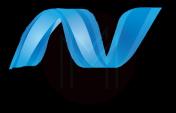
Before moving ahead, let us have a look at some insightful facts about Entity Framework:
A lot of versions have been released since its initial release because of its wide use in the industry. Currently, the two latest versions on the market are Entity Framework 6 and Entity Framework core.
A developer with knowledge of Entity Framework can earn an average salary of $105,000 per annum in the USA. The range of salary varies from $50,000 to $176,000 per annum.
As we have gained the basic knowledge of Entity Framework, let's go through Entity Framework Interview Questions (updated-2024) for each of the following separately:
Top Entity Framework Interview Questions
- What are the three core components of the entity data model?
- What is the purpose of the mapping model?
- What is meant by migration in Entity Framework?
- How can you handle database concurrency?
- Explain the terms dbset and dbcontext.
- Mention the various types of loading that are available for loading related entities in EF.
- What are different types of inheritance supported by the Entity Framework?
- What is meant by Optimistic Locking?
Entity Framework Interview Questions for Freshers:
1. List down the features of Entity Framework.
- Querying
- Cross-Platform
- Modeling
- Saving
- Change tracking
- Concurrency
- Caching
- Transaction
- Configuration
- Built-in conventions
- Migrations
2. What are the three core components of the entity data model?
The three main components of the entity data model forming the basis of the Entity Framework are given below:
- Conceptual model
- Mapping model
- Storage model
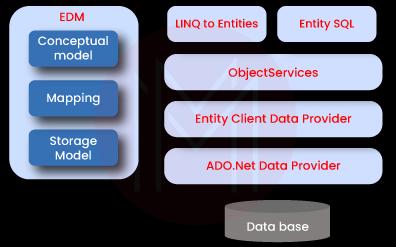
3. Mention the main parts of Entity Framework Architecture?
The following are the main components of Entity Framework architecture:
- LINQ to Entities (L2E)
- Entity Data Model (EDM)
- Entity SQL (E-SQL)
- Net data provider
- Entity client data provider
- Object service
| If you want to enrich your career and become a professional in .Net Programming Language, then visit Mindmajix - a global online training platform: ".Net Training" This course will help you to achieve excellence in this domain. |
4. What is the purpose of the conceptual model?
It is also called the Conceptual Data Definition Language Layer or C-Space. It contains the entities/model classes as well as their relationships. This doesn't affect our database table design. It ensures that business objects and relationships are demarked in XML files.
5. What is the purpose of the mapping model?
It is also called the Mapping Schema Definition Language layer or C-S Space. This model includes the information about the mapping of the conceptual model to the storage model. We can say that this model maps the business objects and their relationships at the conceptual layer to tables and relationships at the logical layer.
6. What is the purpose of the storage model?
It is also called the Store Space Definition Language Layer or S-Space. The storage area in the backend is represented by this model. That's why it's also referred to as the database design model composing stored procedures, keys, views, tables, and related relationships.
7. What is meant by migration in Entity Framework?
The Entity Framework introduced the migration tool for automatically updating the database schema whenever a model modifies without losing data. The two types of migration provided by Entity Framework are automated migration and code-based migration.
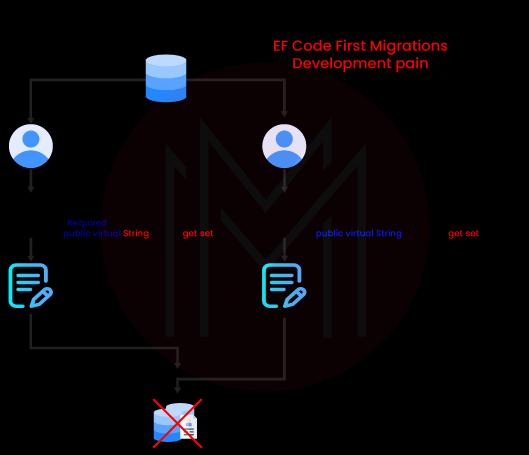
8. What does the .edmx file contain?
Classes can be automatically generated to interact within our application using the EDMX files. The conceptual models, storage models, and the mappings are represented by EDMX files. All the information about SQL objects and tables is contained in it. The essential information needed to render models graphically with ADO.NET is also contained. Its 3 divisions are MSL, CSDL, and SSDL.
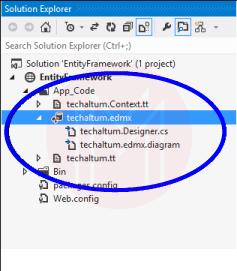
9. Mention some XML generation methods that the dataset object provides.
The following methods are provided by Dataset objects to generate XML:
GetXml(): A string containing an XML document is provided by this method.c
ReadXml(): an XML document is read into a Dataset object by this method.
WriteXml(): The XML data is written to disk by this method.
10. Why is the T4 entity important in the Entity Framework?
T4 files are very important in the code generation of Entity Framework. The T4 code templates read the EDMX XML files. The C# behind the code is then generated by the T4. Just our entity and the context classes are contained in the generated C# behind code.

11. What is meant by the navigation property in Entity Framework?
The navigation property represents a foreign key relationship in Entity Framework's database. The relationships among the entities in a database can be specified with the help of this property type. In the object-oriented code, the relationships are defined such that they remain coherent.
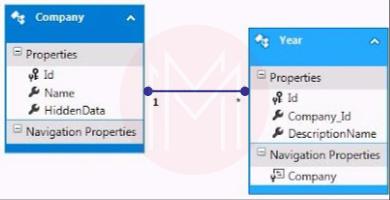
12. What is meant by deferred execution in Entity Framework?
We can delay the evaluation of any expression till the time we want its realized value to appear. Therefore we can improve the performance significantly by avoiding unnecessary execution. Until the query object or query variable iterates over a loop, queries get deferred.
| Related Articles: .Net FrameWork |
13. What do you mean by database concurrency?
Database concurrency arises when multiple users are accessing and modifying the same data simultaneously in the same database. And the concurrency controls are the systems by which the consistency of data is protected in such situations.
14. How can you handle database concurrency?
We can implement optimist locking to handle the database concurrency. We can implement the locking by right-clicking on the EDMX designer and setting the concurrency model to Fixed. If any concurrency issue exists, a positive concurrency exception error arises.
15. What are various types of properties supported in Entity Framework?
Entity Framework supports mainly 3 types of properties. And they are given below:
- Complex property
- Navigational property
- Scalar property
Entity Framework Interview Questions for Experienced
1. Explain SSDL, CSDL, and MSL divisions in an EDMX file.
- SSDL- Its full form is Storage Schema Definition Language. Mapping to the RDBMS data structure is defined in this division.
- CSDL- Its full form is Conceptual Schema Definition Language. It is an application that exposes conceptual abstraction. The model object's description can be found in this division.
- MSL- Its full form is Mapping Schema Language. It connects CSDL and SSDL. Or we can say that it maps the model to the storage.

2. How can the Entity Framework's performance be increased?
Its performance can be increased by:
- Not pulling all databases into a single entity model.
- Choosing the right data collection for manipulation.
- Using pre-generating views to reduce the first request's response time.
- Disabling or altering the tracking of entity when no longer required.
- Not fetching all fields without use.
- Optimizing and debugging LINQ queries.
- Using compiled queries as much as possible.
3. Explain the terms dbset and dbcontext.
Dbset- operations can be created, updated, read, and deleted on any entity set in a dbset class. We must include the dbset type properties mapping to the database tables and views in the context class (from dbcontext).
Dbcontext- It is an important class in Entity Framework API. This is used to connect a domain class or entity and the database. Its main responsibility is to communicate with the database.
4. What are POCO classes in Entity Framework?
POCO means 'Plain Old CLR Objects'. Still, it doesn't imply the oldness and plainness of these classes. A POCO class doesn't contain any reference to the .NET framework or Entity Framework. The POCO entities are the same as available domain objects in Entity Framework objects.
These classes are not dependent on any framework-specific base class. This is unlike the general .NET class. The entity object-derived LINQ queries are supported by POCO. And the POCO entities are supported by both EF core and EF 6.
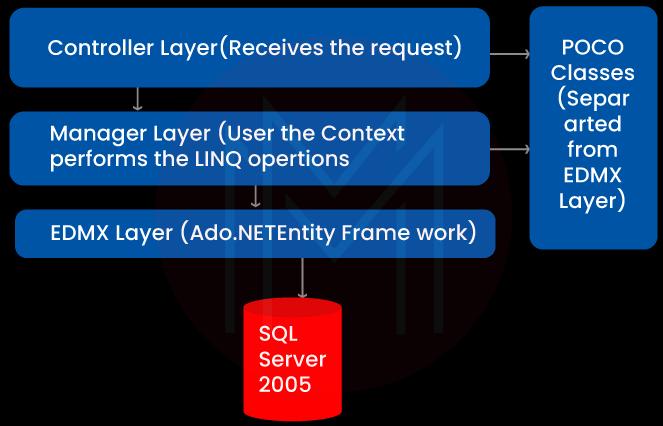
5. Mention the various types of loading that are available for loading related entities in EF.
The given loading types are offered by Entity Framework:
- Lazy loading
- Eager loading
- Explicit loading
6. Explain the eager loading, lazy loading, and explicit loading in detail.
Lazy loading: The loading process of related objects is delayed till the time we need them. Only the objects we need are returned in the lazy loading. At the same time, the other related objects get returned only when we need them.
Eager loading: in this loading, all the related objects are also returned along with the object's query. All the related objects get loaded automatically along with the parent object. We can achieve eager loading in EF 6 by using the Include method.
Explicit loading: This occurs only when we desire lazy loading. The relevant load method should be explicitly called for processing explicit loading. We can achieve explicit loading in EF 6 by using the load method.
7. What are different types of inheritance supported by the Entity Framework?
The following three are primary types of inheritance in Entity Framework:
- Table per hierarchy (TPH)
- Table per type (TPT)
- Table per concrete class (TPC)
8. Explain the data access architecture available in Entity Framework.
ADO.NET supports the given two types of data access architecture:
- Connected data access: We can access the linked data by the data provider's data reader object. And we can collect the data quickly, but we can't edit it.
- Disconnected data access: The data adapter object enables disconnected data access. Datasets work independently of databases, and we can edit data also.
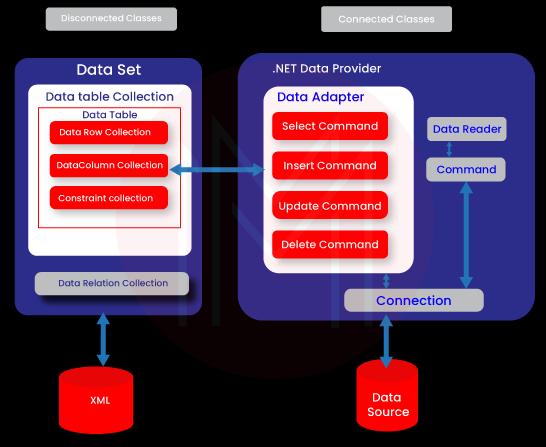
9. Which methods can be followed to execute plain SQL in the Entity Framework?
We can follow the given three methods to execute plain SQL in Entity Framework:
- SqlQuery()
- Database.SqlQuery()
- Database.ExecuteSqlCommand()
| Do you want to know more about SQL, Take a Look at this SQL Tutorial |
10. Explain the role of singularizing and pluralizing in the Entity Framework.
The main responsibility of singularizing and pluralizing in Entity Framework is assigning the objects meaningful naming conventions. This feature can be accessed through the .edmx file. The coding conventions will be assigned to the singular and plural while this feature is used. The convention names have an extra 's' if there are two or more records within an object.
11. What is meant by micro O/RMs in Entity Framework?
A micro ORM is not made to create database schemas, track changes, modify database schemas, etc. Instead, its primary function is to work with database tables. Because the Entity Framework Core and Entity Framework 6 have a complete set of functionalities and features, they are referred to as O/RMs.
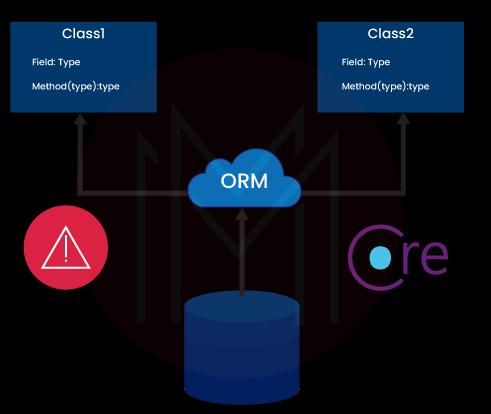
12. Name some O/RMs that you can use with applications based on .NET.
Some of the O/RMs that we can use with applications based on .NET are listed below:
- Entity Framework Core
- Entity Framework 6
- Dapper
- N hibernate
13. What is meant by Optimistic Locking?
Optimistic Locking is the process of reading a record and noting a version number, timestamp, date, or hash. And then, we check that the record hasn't changed before writing the code back. While writing the record back, we filter the update on the version, ensuring that it's atomic. And then the version is updated in a single hit.
We can abort the transaction and then re-start it if the record is found dirty.
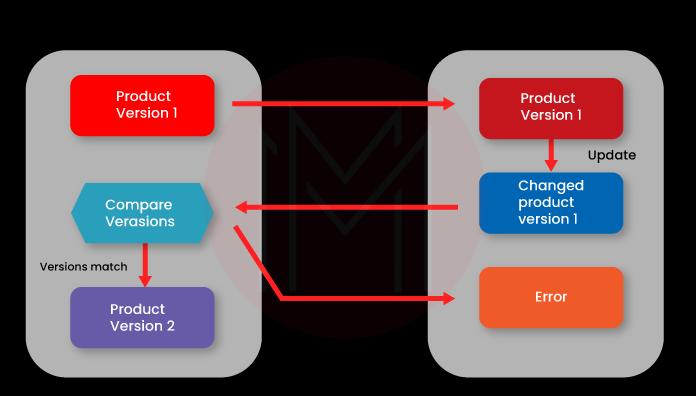
14. What is meant by SQL injection attack?
The hackers use this method of SQL injection to access sensitive information from the databases of organizations. This happens because of improper coding in the applications. This enables the hackers to inject SQL statements into our SQL code.
The main reason behind SQL injection is that the SQL statements are allowed by the user input fields to pass through and query the database directly.
15. Which namespace is used for the inclusion of the .NET data provider for the SQL server in your .NET code?
We use namespace- System.Data.SqlClient for the inclusion of a .NET data provider for SQL server in our .NET code.
Frequently Asked Interview Questions on Entity Framework:
1. Name some companies that use Entity Framework in their tech stacks.
Some of the companies that use Entity Framework in their tech stack are given below:
- RoofStacks
- PFB
- Mews
- Insoft
- Tray Corp.
- product development
- Evodeck Digital
- OPLOG Dev Tech.
2. List some popular tools with which the Entity Framework is integrated.
PostgreSQL, MySQL, SQLite, Microsoft SQL Server, .NET, Oracle, Firebird, and IBM DB2 are some of the popular tools with which Entity Framework is integrated.
3. List some alternatives to Entity Framework.
Some of the alternatives to Entity Framework are listed below:
- Hibernate
- NHibernate
- Entity Framework Core
- SQLAlchemy
- Sequelize
4. Differentiate between Entity Framework and MVC.
MVC is a framework that focuses primarily on the way of delivering a webpage to the client from the server. While the Entity Framework enables you to access various abstract kinds of databases (MySQL, MSSQL, etc.) and query objects. It is an object-relational mapper, and it doesn't have SQL strings in the projects.
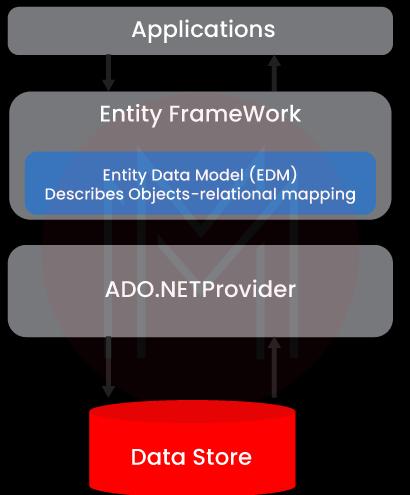
5. Write down the advantages of using the Entity Framework?
The advantages of Entity Framework are:
- We can write object-oriented codes with excellent prototypes
- The developer's job gets simplified as the alternate commands reduce the code length significantly.
- Creating and modifying a database becomes simple because of auto-migration.
- All the object queries have a unique syntax (Yoda/LINQ) irrespective of them being the databases.
- The auto-generated code reduces development costs as well as development time.
- The drag and drop tables help in mapping the business objects easily.
- Multiple conceptual models can be mapped to a single storage scheme.
6. What are three types of approaches for modeling entries in Entity Framework?
The following three types of Entity Framework approaches are there:
- Code First
- Model First
- Database First
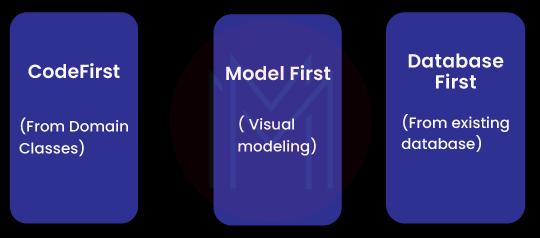
7. When should the different approaches be used?
The Code First approach suits best when we have the domain classes already with us. On the other hand, the Database First approach is best when we have a database. And the Model First approach is used when we don't have a database or the model classes. The Model First approach provides us with the visual entity tool for designing.
8. Why should the Entity Framework be used?
It becomes tough to write and manage ADO.NET codes at times. And the Microsoft developed Entity Framework solves this problem of managing the tedious tasks. Entity Framework provides domain-specific objects as relational data. Hence, the code-based tasks get reduced significantly.
9. Differentiate between Entity Framework and ADO.NET.
Entity Framework- It is slower than ADO.NET. No data layer codes are created by it. The data access layer codes, intermediate codes, and mapping codes are automatically created by it. This is the reason why they work and time of the developers get cut short.
ADO.NET- It is relatively faster. Several data layer codes are created by it. Codes are not created for the intermediate layers, data access layers, and mapping codes by ADO.NET.
10. Mention the primary functions of the Entity Framework.
The primary functions of Entity Framework are given below:
- It enables the mapping of domain classes to the database schema.
- Alterations in the entities are kept on track.
- It enables the execution of LINQ queries to SQL.
- The changes stats are stored in the database.
Conclusion
.NET developers can work with Entity Framework in the database with the help of .NET objects. Through this, we eliminate the conventional method of accessing data via code. And we can read as well as write from a database. Hence, this makes it highly valuable app development software. There are ample opportunities available in the market for .NET developers with Entity Framework knowledge. And we hope that we can provide significant help to all those individuals via this compilation of Entity Framework Interview Questions.
 On-Job Support Service
On-Job Support Service
Online Work Support for your on-job roles.

Our work-support plans provide precise options as per your project tasks. Whether you are a newbie or an experienced professional seeking assistance in completing project tasks, we are here with the following plans to meet your custom needs:
- Pay Per Hour
- Pay Per Week
- Monthly
| Name | Dates | |
|---|---|---|
| .NET Training | Dec 23 to Jan 07 | View Details |
| .NET Training | Dec 27 to Jan 11 | View Details |
| .NET Training | Dec 30 to Jan 14 | View Details |
| .NET Training | Jan 03 to Jan 18 | View Details |

















